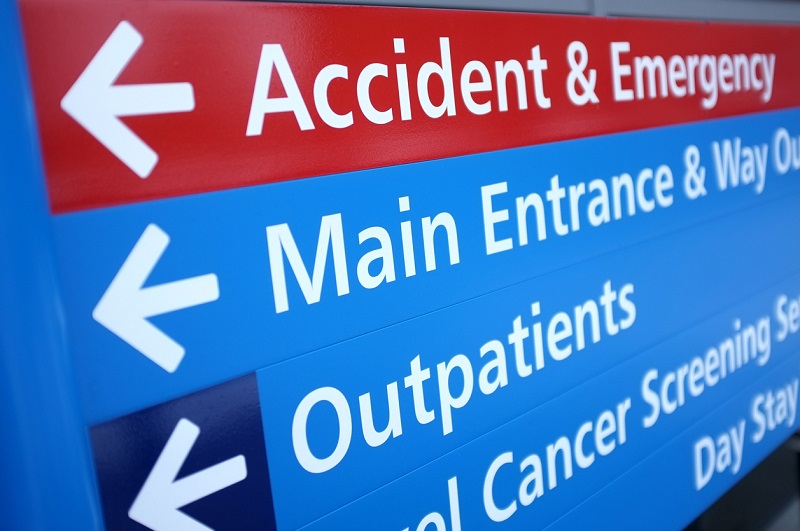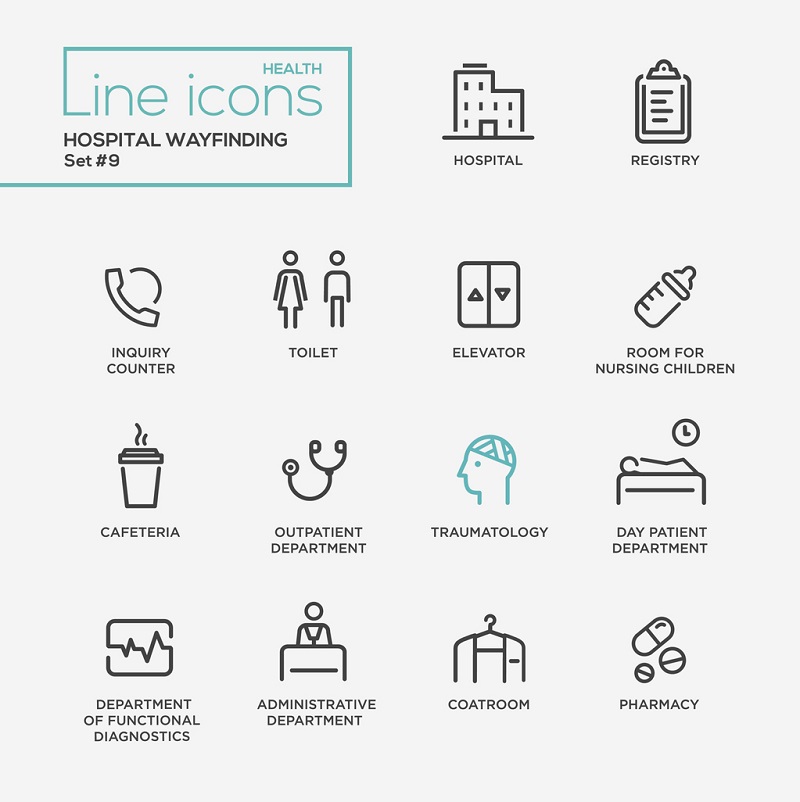Hospitals can be confusing. Especially those large, multi-building campuses. You've probably experienced it yourself – that feeling of being lost in a maze of hallways when you or a loved one are already stressed about an appointment or procedure. That's where effective wayfinding comes in.
Think of wayfinding as a friendly guide within your hospital. It's a system designed to help patients, visitors, and even staff get where they need to go quickly and easily. We're talking about everything from clear signage and color-coded pathways to interactive kiosks and even mobile apps.
 /
/
Why is Wayfinding Important for Hospitals?
We all know hospitals are busy places. They're bustling with patients, visitors, and staff, all with different needs and destinations. A well-thought-out wayfinding system can be a game-changer, helping to keep things running smoothly. Here's how:
1. Reducing Patient Stress:
Let's face it, no one wants to be in a hospital. Patients are often anxious and worried. Getting lost or struggling to find their way only adds to that stress. Intuitive wayfinding helps ease that burden by making navigation straightforward. When people know where they're going, they feel more in control and less anxious.
2. Saving Precious Time:
Time is a critical resource in any healthcare setting. Minutes can make a difference. Good wayfinding helps patients and visitors find their destinations faster, meaning less time wasted wandering and more time for appointments, procedures, and visits. It also helps staff avoid giving constant directions, letting them focus on core duties.
3. Freeing Up Staff Resources:
How often do your staff get stopped for directions? It happens all the time. Clear, effective wayfinding empowers people to navigate independently. This means your team can spend less time directing traffic and more time on patient care and other essential tasks. It also provides a more comfortable space where patients are not frustrated by confusing wayfinding and can allow for hospital staff to more effectively do their jobs.

How to Improve Your Hospital's Wayfinding: Practical Tips
You might already have some wayfinding in place. But with growing patient populations and expanding facilities (especially with our aging Baby Boomer generation), it's always a good idea to revisit and optimize your approach. There is always room for improvement. Here are some practical strategies to consider:
1. Digital Kiosks: Your Interactive Guides:
Interactive digital wayfinding kiosks are becoming increasingly popular, and for good reason. They can provide detailed maps, directories, and even step-by-step directions. Plus, many offer information about hospital services, amenities, and even local area guides. These are a huge step up from traditional static directories and can significantly improve user experience.
2. Signage: The Foundation of Good Wayfinding:
Clear, well-placed signage is still crucial, both physical and digital. Think about directional signs at intersections, clear labels for departments and wings, and even digital signage displays in waiting areas that update patients on wait times. The key is consistency and clarity.
3. Thoughtful Pathways and Design:
This is where the principles of design come into play. Using color-coded pathways, distinct landmarks, or unique lighting can help differentiate areas and guide people intuitively. Many hospitals successfully use color to distinguish different wings or departments, making it easy for visitors to orient themselves.
4. Optimizing Sightlines: Make it Easy to See:
This is often overlooked, but it's a critical part of good wayfinding. When designing or renovating spaces, consider sightlines. Can people easily see directional signs from a reasonable distance? Are there clear visual cues that guide them along their path? Think of it like designing city streets – you want people to be able to anticipate where they need to go next.
5. Less is More: Simplifying Navigation:
It might sound counterintuitive, but limiting choices can actually make navigation easier. Instead of offering multiple routes to the same destination (which can be confusing), try to create a single, well-defined path. It's about making the journey as straightforward as possible.
6. Mobile Apps: Wayfinding in Your Pocket:
Many larger hospitals are now offering wayfinding apps. These can be incredibly helpful, providing detailed floor plans, turn-by-turn directions, and even integration with GPS. It's like having a personal guide right on your smartphone.
Making Wayfinding A Better Experience for Everyone
Investing in clear wayfinding is an investment in a better patient and visitor experience. It shows that you value their time and well-being. By making your hospital easier to navigate, you can reduce stress, improve efficiency, and create a more welcoming environment for everyone. Ultimately, your patients, visitors, and your staff will thank you.
Consider this an open invitation to rethink your hospital's wayfinding. Start a conversation with your team, observe how people are currently navigating your spaces, and explore some of these ideas. Small changes can make a big difference.
Disclaimer: This information is intended for general guidance and may not be applicable to every hospital's unique situation. Consult with wayfinding experts for tailored recommendations. Remember to comply with all relevant accessibility regulations when implementing wayfinding solutions.

 /
/